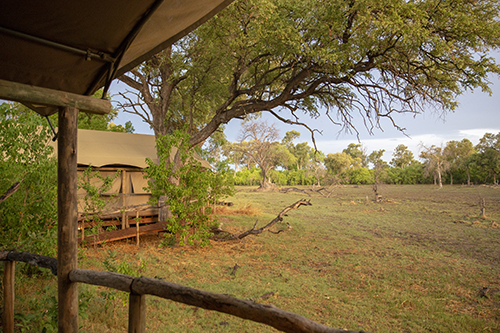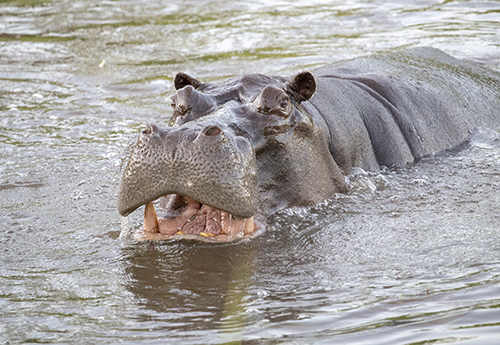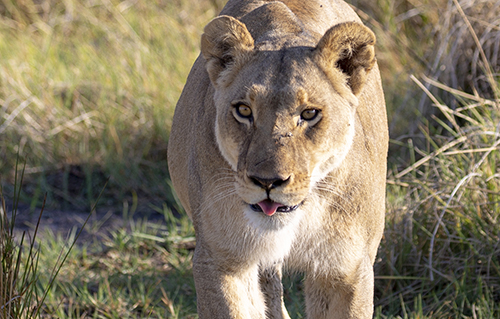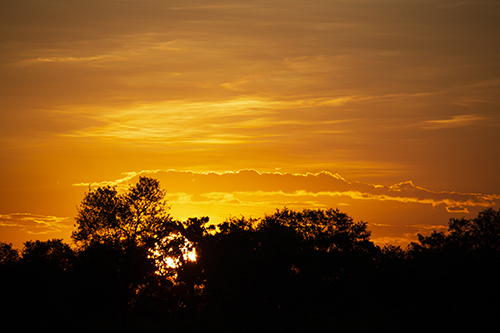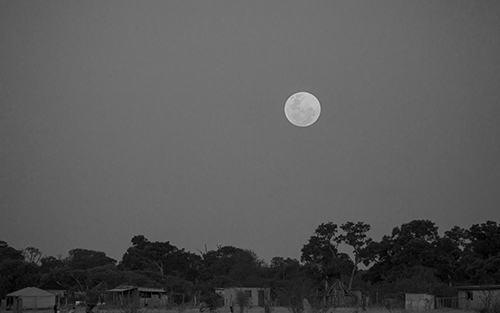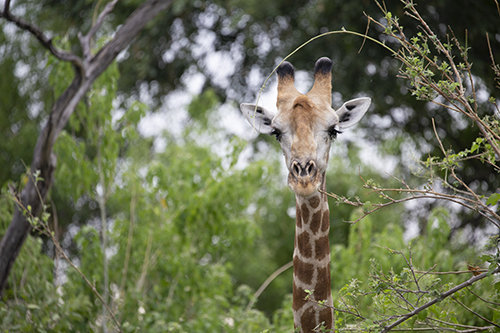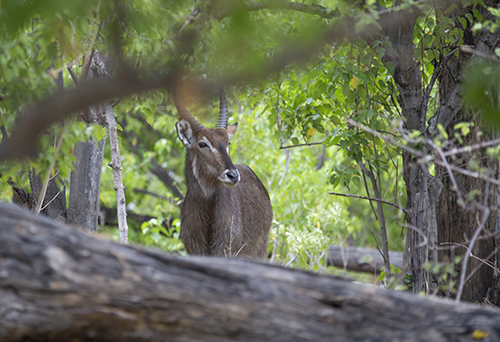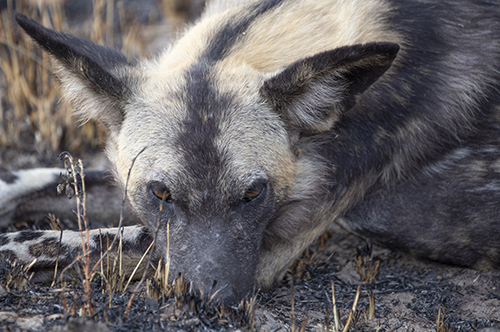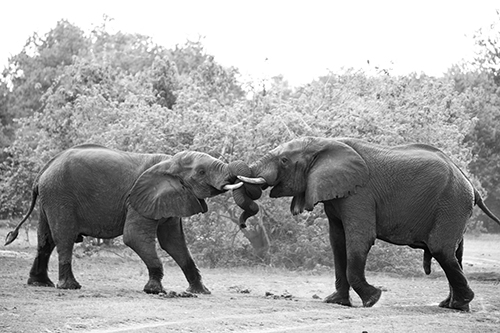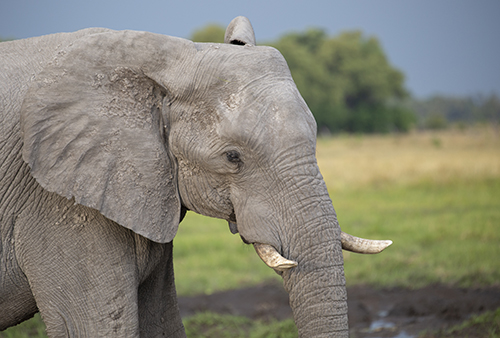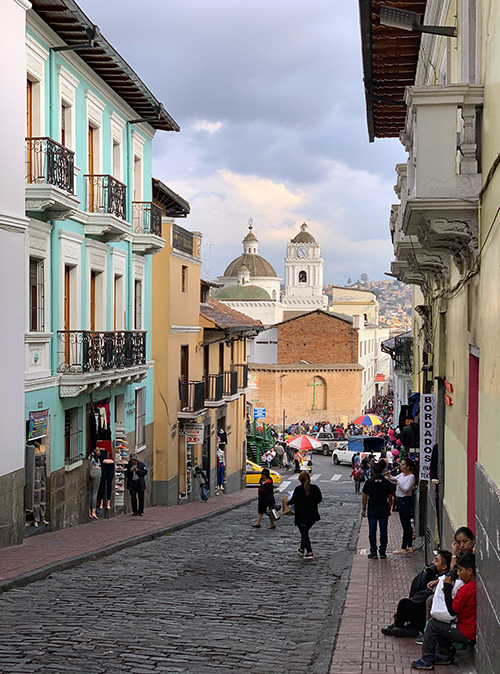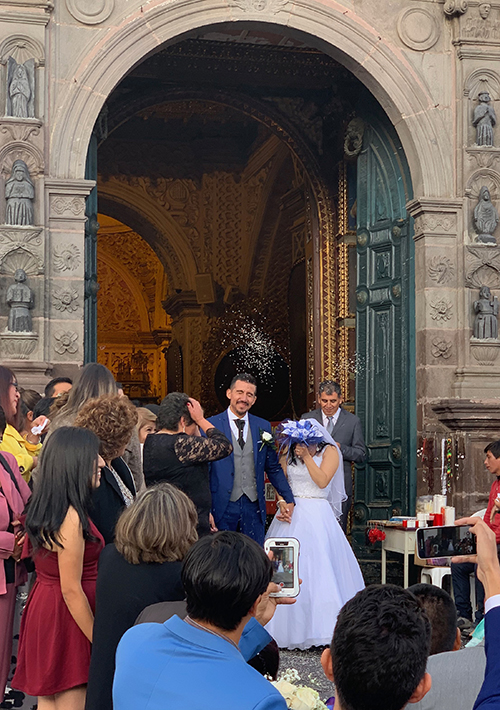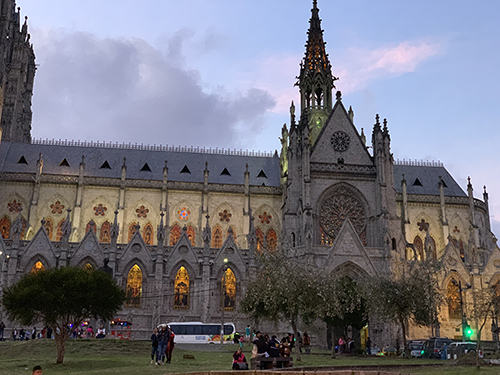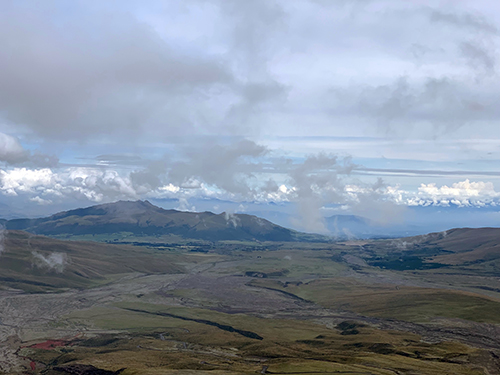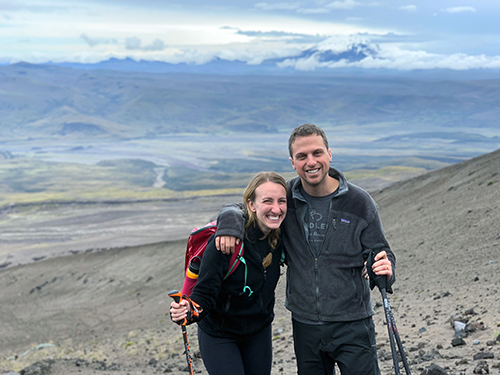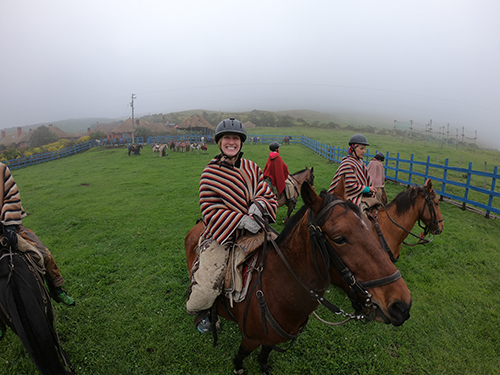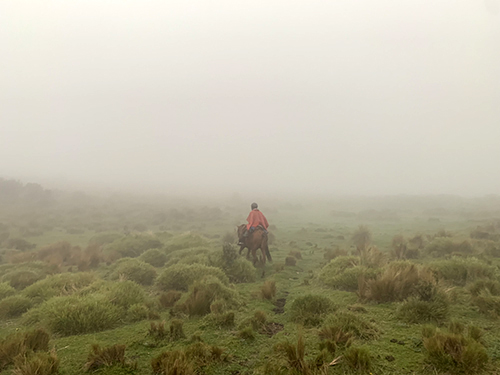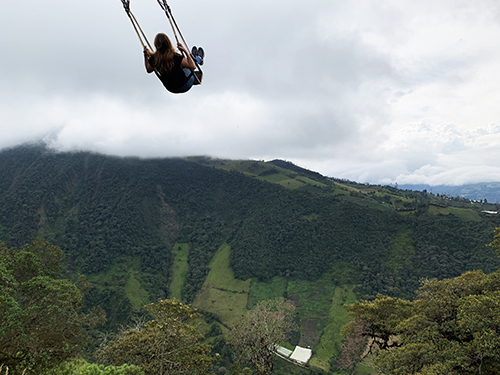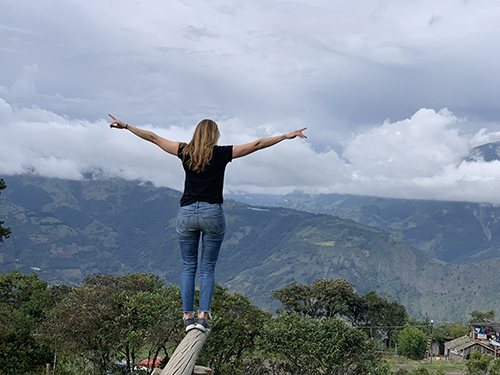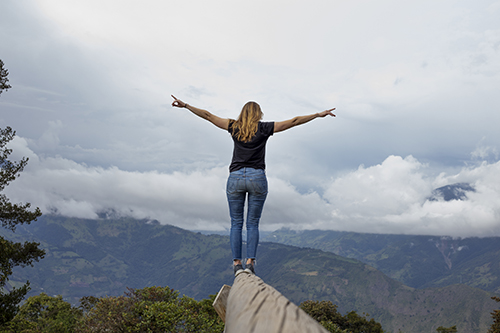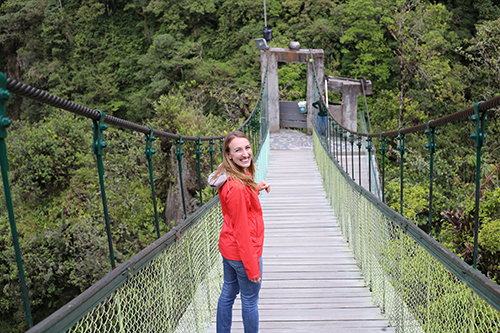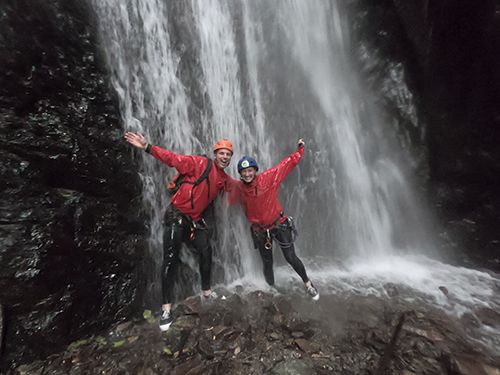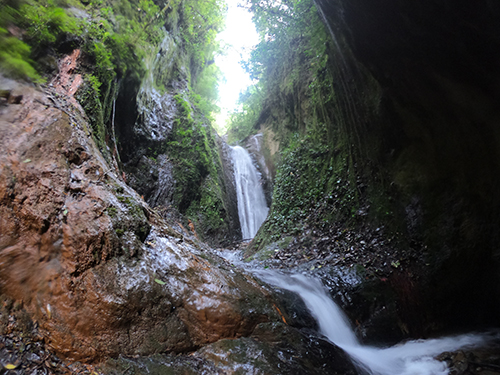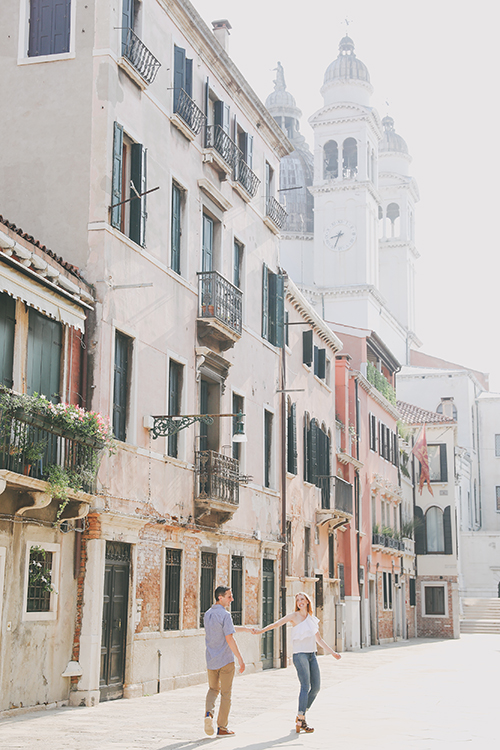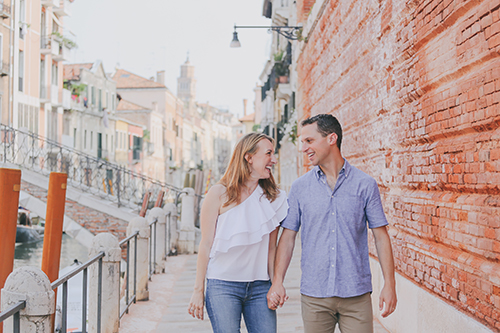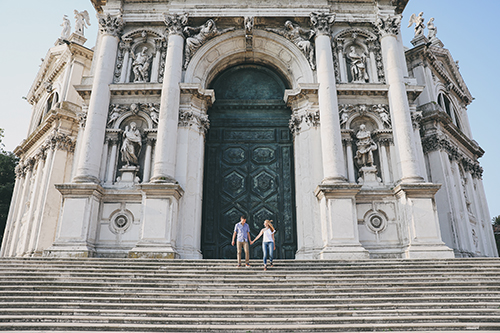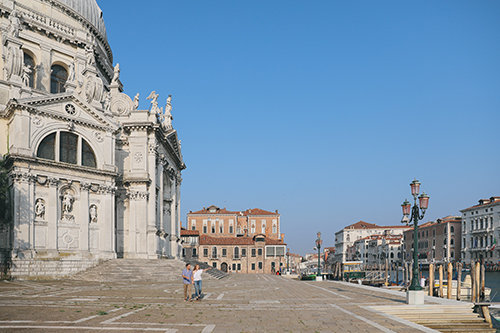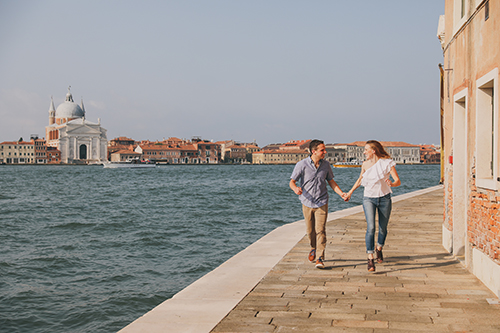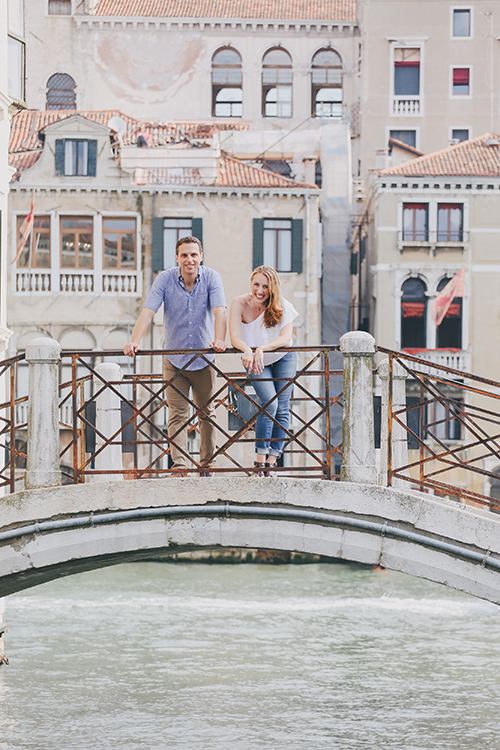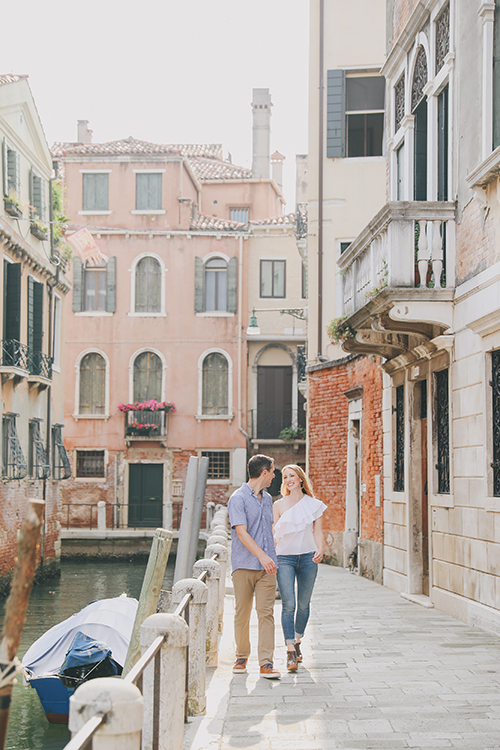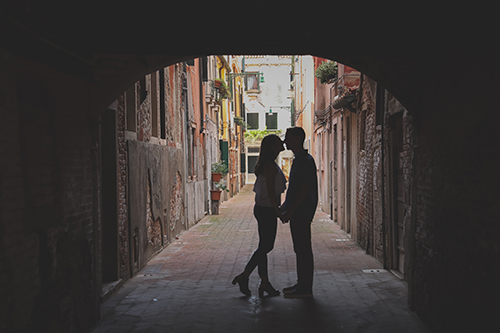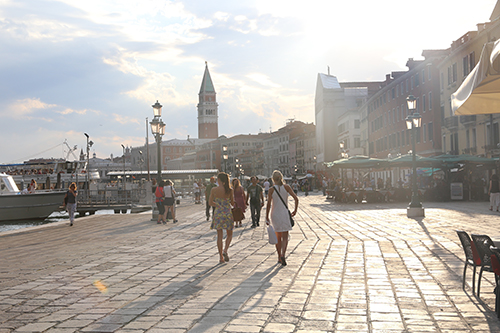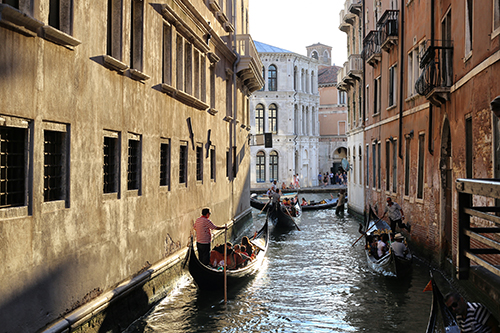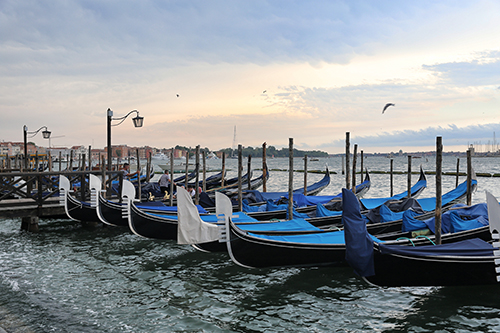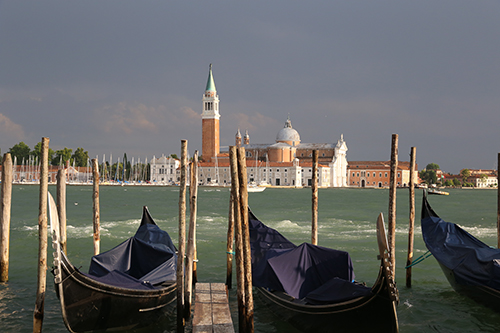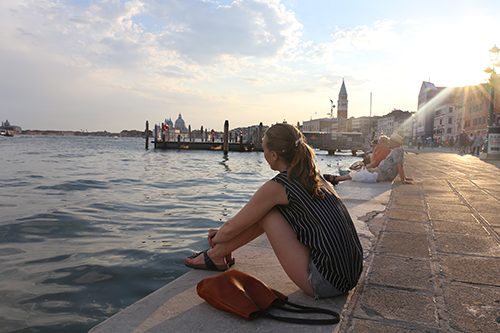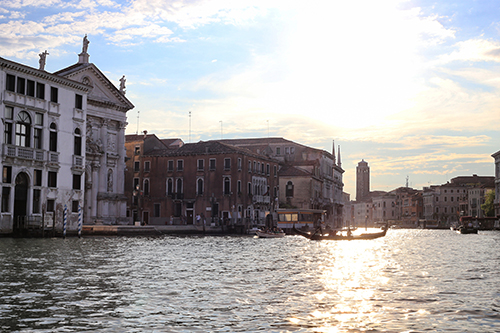To set the scene, our first full day in Ecuador is in the Napo Province on the edge of the Amazon jungle.
Pushing away Jurassic leaves, we walk over rooted rocky paths through a humid rain forest where we hear the sounds of water overhead but because of a dense canopy, none is really felt. At first glance, the hike’s excitement comes from dodging “bullet” ants whose bites sting for up to 24 hours and admiring vines that are perfect monkey ladders. The path is a bit slippery which challenges my balance now and again, and I find myself running into spider webs seemingly none with spiders attached. Once we get down to a slow-moving stream, our nature walk quickly becomes more of an Amazonian trek.
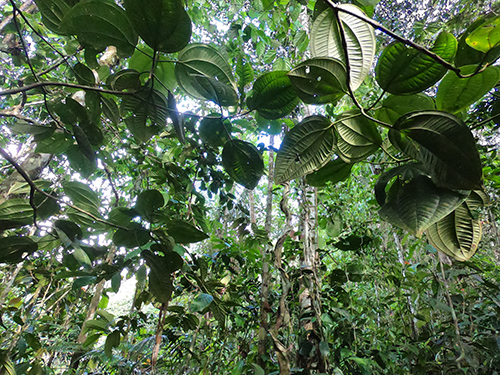
The so-called wellies that we were given are starting to make more sense. We walk through the calf-high stream and suddenly stop when Jose, our guide, comes to a halt. It’s a baby viper snake.
Jose finds a long stick, splits the end into a fork, and traps the snake’s head in the “y”. Not sure exactly what his plan is as he wrangles the snake with his stick in one hand while wielding a machete in the other. After about 10 seconds of chaos, the snake wriggles its way out of Jose’s hold and starts swimming downstream. I learn that when a frightened viper swims, it keeps its head above water creating a very intimidating s-shape as it goes. It finds a fallen tree trunk and climbs up, but not too high.
As it sits there watching the path, Jose stands between the snake and us hikers while we tip-toe around. Luckily, we’ve learned that we have a full 2 hours to get to a hospital after being bitten before we’d have to amputate a limb. So, worst case scenario, we’re probably screwed. The guide’s sweat seems only to be from the weather and not the stress, but all of us are holding our breaths nonetheless. We remain on the lookout for the rest of the hike, but are pleased not to be greeted by any other slithering reptiles.
Next on the tour, we approach caves of bats. While I’m enjoying my full Bruce Wayne awakening moment, I find Lindsey in a fetal position far back on the trail. Apparently, Lindsey suffers from chiroptophobia. I thought we’d shared our phobias before marriage, but I guess we continue to learn more about each other every day. Marriage truly is a gift.
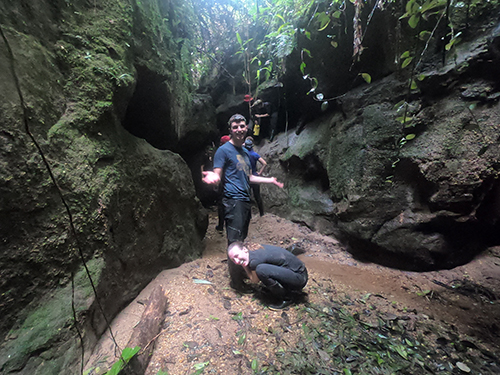
I manage to only get slammed into by two bats, one of which comes in with quite some force. So much so that it ricochets back towards Lindsey who ducks just in time; actually, I think she was down the whole time, but so goes the story. Lindsey, from her squatted position, avoids all contact from these creatures. Jose tells us repeatedly that these are just fruit buts, but that still doesn’t help alleviate Lindsey’s fear that they’re human flesh-eating nightmares.
And if the final phase of the hike wasn’t going to be difficult enough, we need to now shimmy up a crease between 2 shear rocks keeping a look out for the blind bats just waiting to poop on us. With our feet pressed on one rock and our back against another, we make slow and steady movement upwards. And because of my healthy fear of heights, I psych myself up to conquer this, but frighteningly our trip-mate right just ahead falls from over 7 feet up. After a slow-motion fall, I hold my breath waiting to assess the damage. She jumps right up with spirits still very high. But my adrenaline is now at code red. I try to slow my breath as this moment isn’t about me, it’s about her. Luckily, besides a couple bruises she’s actually totally fine. I’m not convinced if I attempt the same fall, I would get the same fate.
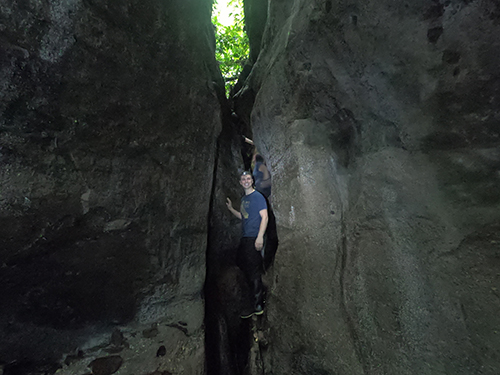
Without looking too far down for fear of falling or too far up for risk of getting bat poop in my eye, I just keep making progress. Relieved when we get to the top, this is just the first 20 feet of shimmying, and we have another half mile before reaching solid footing.
We survive, the viper survives, the bats survive, and as we wrap up our first full day in Ecuador, we gain a whole new appreciation for the Amazon.
